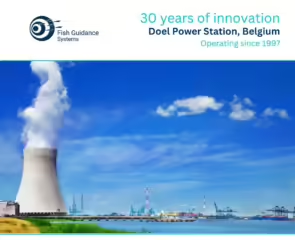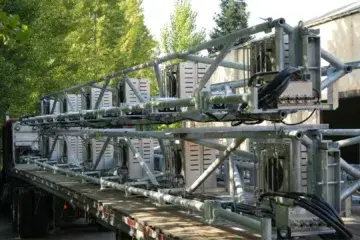EDF, the developers of the proposed Sizewell C nuclear power plant in Suffolk have revealed they have pledged £250m to mitigate the impact the project will have on the environment around it – however there is no mention of the acoustic fish deterrent (AFD) which could prevent millions of fish a year from being pulled into the plants’ double decker bus sized underwater cooling intakes.
The Public Enquiry has now come to an end on Sizewell C and the Planning Inspectorate is now preparing their report for the Secretary of State for Business, Energy and Industrial Strategy.
“Not Gone Quite Far Enough”
The proposal includes the creation of new habitats, landscape mitigation, biodiversity improvements and a tourism fund, but the BBC has reported that “ Richard Rout, Conservative deputy leader of Suffolk County Council, stated: “We have made progress over the period of the examination, but we don’t think it has gone quite far enough to be the very best project that it can be for Suffolk.”
The majority of the fund is designated to focus on above water mitigation projects, with almost nothing set aside to prevent the impact that Sizewell C will have on the surrounding waters. A key component of any impact prevention is reducing the impact the cooling intakes will have on surrounding fish populations. At Sizewell’s sister plant Hinkley Point C, there are environmental measures in place to mitigate damage – including an acoustic fish deterrent (AFD), although this is currently being challenged by EDF.
Why is an AFD at Sizewell C so Important
The AFD is part of a three part system to stop fish from being unnecessarily drawn into the plant along with the water needed to cool the reactor. The installation of all three components is UK Best Practice, as the AFD works alongside a fish return system and Low Velocity Intake Heads to create a codependent system that allows fish to detect the cooling intakes and then have the ability to swim away. Both the fish return system and the Low Velocity Intake Heads are due to be installed at Sizewell C, but according to Managing Director of Fish Guidance Systems Dr David Lambert, these systems will be ineffective without an AFD.
“The vast majority of the fish at Sizewell are fragile fish, such as sprat and herring, and EDF accepts that all the fragile fish will die without the installation of an AFD. EDF claims the Low Velocity Intake Heads are designed to reduce the number of fish drawn in, but the design has never been installed before, and so is unproven. The way to reduce fish being drawn into the intake is to make sure the fish are aware the intakes are actually there. An AFD provides an acoustic signal to warn the fish of the danger and without an AFD in place, the fish will have nothing to alert them to the intake and they will be sucked inside. The current Sizewell C environmental mitigation measures do not go far enough.”
An AFD is currently mandated at EDF’s under construction Hinkley Point C, although this is currently being appealed. During that appeal process the importance of the AFD was highlighted, alongside methods of how to eliminate the risk to divers by using ROVs for the maintenance of the AFD in the maintenance of the AFD.
The final decision on Sizewell C is rumoured to be made in April 2022. For further information on the importance of an AFD at Sizewell C, please visit our minisite


